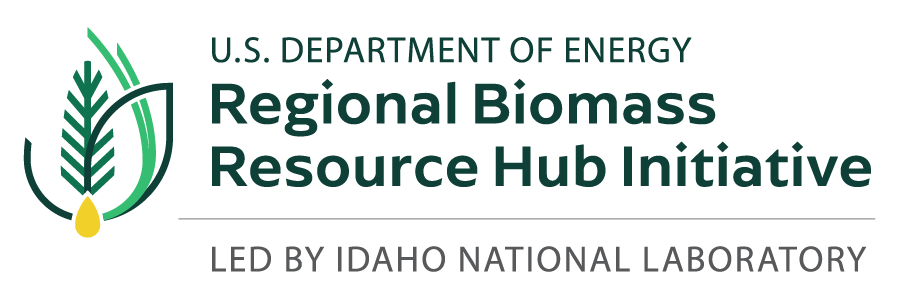Description
This capability involves prediction of carbon, nitrogen, and water cycling in agricultural ecosystems at the scale of individual soil map units (pseudo field-scale) using the process-based DayCent model. Such modeling enables prediction of changes in plant productivity, soil organic carbon (SOC) levels, and nitrous oxide (N2O) emissions in response to management changes or the cultivation of new energy crops. SOC and N2O are the principal greenhouse gases (GHG) emitted from row cropping, and contribute significantly to the emissions footprint of biofuels from first-generation feedstocks (e.g., corn grain), crop residues (e.g., corn stover), intermediate winter oilseed crops (e.g., carinata), and dedicated perennial energy crops (e.g., switchgrass). Current capabilities include curation of relevant observational datasets, model parameterization and validation, and landscape- and regional-scale spatial modeling workflows to support landscape design and life-cycle assessment. Existing capability focus on the DayCent ecosystem model, though capabilities for intercomparison with other soil and land models currently under development. This modeling and analysis approach is generally aligned with IPCC GHG inventory recommended best practices, and many emerging carbon market MRV protocols.
Capability Bounds
Curation of relevant observational datasets (e.g., energy crop productivity, SOC changes, and N2O emissions data), model parameterization and validation, and landscape- and regional-scale spatial modeling workflows.
Unique Aspects
We have leveraged this capability widely in cellulosic and advanced bioenergy applications, including first-of-a-kind studies of landscape design and optimization (Field et al. 2018), comparison to alternative natural climate solutions (Field et al. 2020), and assessment of winter oilseeds as feedstocks for sustainable aviation fuel production (Field et al. 2022).
Availability
Modeling workflows have been developed in Python and R, and deployed on local computing environments. Workflows are currently being adapted for deployment on ORNL high-performance computing resources.
Benefit
This modeling can be used as an input to life-cycle assessment studies quantifying the carbon intensity of feedstock and bioenergy systems. These methods are generally aligned with IPCC GHG inventory recommended best practices, and many emerging carbon market MRV protocols.
Capability Expert(s)
John Field, Brandon Sloan
References
Field, J. L., Marx, E., Easter, M., Adler, P. R., & Paustian, K. (2016). Ecosystem model parameterization and adaptation for sustainable cellulosic biofuel landscape design (opens in new window). GCB Bioenergy, 8(6), 1106–1123.
Field, J. L., Evans, S. G., Marx, E., Easter, M., Adler, P. R., Dinh, T., Willson, B., & Paustian, K. (2018). High-resolution techno–ecological modelling of a bioenergy landscape to identify climate mitigation opportunities in cellulosic ethanol production (opens in new window). Nature Energy, 3, 211–219.
Field, J. L., Richard, T. L., Smithwick, E. A. H., Cai, H., Laser, M. S., LeBauer, D. S., Long, S. P., Paustian, K., Qin, Z., Sheehan, J. J., Smith, P., Wang, M. Q., & Lynd, L. R. (2020). Robust paths to net greenhouse gas mitigation and negative emissions via advanced biofuels (opens in new window). Proceedings of the National Academy of Sciences, 117(36), 21968–21977.
Field, J. L., Zhang, Y., Marx, E., Boote, K. J., Easter, M., George, S., Hoghooghi, N., Johnston, G., Masum, F. H., Mulvaney, M. J., Paustian, K., Seepaul, R., Swan, A., Williams, S., Wright, D., & Dwivedi, P. (2022). Modeling Yield, Biogenic Emissions, and Carbon Sequestration in Southeastern Cropping Systems With Winter Carinata (opens in new window). Frontiers in Energy Research, 10, 837883.
